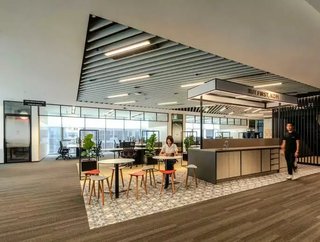Microsoft rolls out digital twin using sensors, IoT and AI

Microsoft has created a digital twin of its regional Singapore headquarters, in collaboration with Bentley Systems and Schneider Electric.
Digital twins offer a way of representing the real world in a digital space, in turn gaining insights which can be applied to drive efficiencies back in the real world. Volker Busch, Chief Data Officer of professional services firm Arup, gave a helpful definition of the concept in the company’s digital twin report: “A digital twin, as a means to link digital models and simulations with real-world data, creates new possibilities for improved creativity, competitive advantage and human-centred design. Digital twins can help deliver on the grand challenges facing society, including achieving the United Nations’ Sustainable Development Goals and addressing rapid urbanisation, population growth, and escalating infrastructure costs.”
179 Bluetooth beacons and 900 sensors from Schneider Electric have been installed to collect data on topics such as lighting, air quality and temperature, which are in turn aggregated through the Microsoft Azure cloud platform.
SEE ALSO:
The creation of the digital twin had the joint ambition of increasing comfort for employees as well as improving energy efficiency. The project also integrated with the Smart Building CampusLink application to make smarter the practice of booking rooms, for instance determining occupancy and turning on lighting on-demand.
Ricky Kapur, Microsoft’s VP for Sales, Marketing and Operations for Microsoft in Asia Pacific said: “The workplace of the future is about embracing innovation into the very fabric of our space, so that we create multiple touchpoints of connectivity, are intentionally inclusive and accessible, while being very mindful of sustainability and the environment. At Frasers Tower in Singapore, we worked closely with Bentley Systems and Schneider Electric to implement sensors and telemetry to create a connected workplace, that allows us to adjust the space based on usage, therefore improving energy efficiency.”
Microsoft is far from alone in the race for smart buildings, with International Data Corporation expecting IoT devices to generate 79.4 zettabytes of data by 2025.
(Image: Microsoft)
- OpenText’s Muhi Majzoub: Engineering Platform Growth with AIEnterprise IT
- OpenText CEO Roundtable: The Future of Safe Enterprise AIDigital Transformation
- OpenText AI: Empowering Businesses in Information ManagementDigital Transformation
- Microsoft in Japan: $2.9bn Investment to Boost AI & CloudCloud & Cybersecurity






